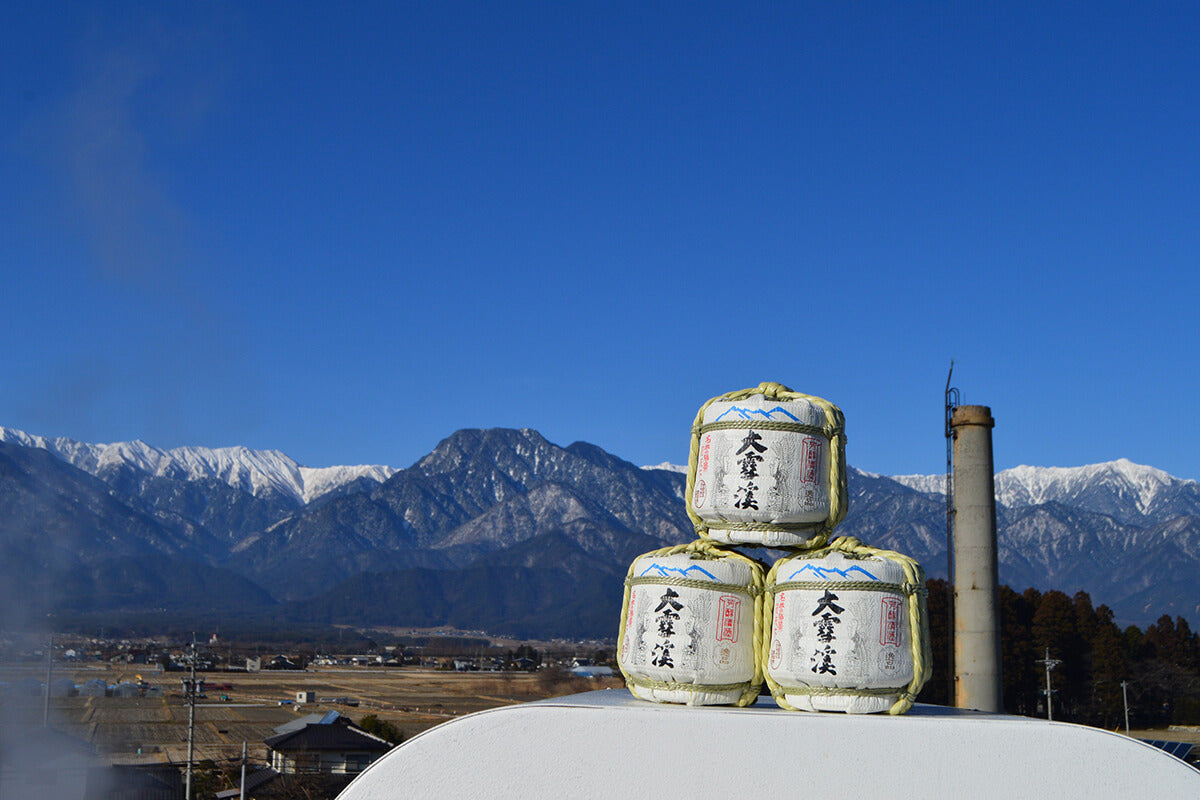Daisekkei “Junmai Ginjo” Summer Release
Nagano prefecture
Light, juicy and smooth
With its aqua blue bottle and fireworks label design, this sake is a celebration of summer inside and out. Gentle aromas of pear, melon and grape lead into a light yet juicy taste. Its soft mouthfeel, fruity acidity and clean, dry finish make it a vibrant yet easygoing experience — just like the season it represents. Seafood, salads and sautéed vegetables are all friendly pairings.
Characteristics
| Brand | Daisekkei |
| Brewery | Daisekkei Brewing Company |
| Category | Junmai Ginjo |
| Subcategory | N/A |
| Taste Profile | Light & Dry |
| Rice variety | Miyamanishiki |
| Yeast variety | In-house (Kumamoto Yeast lineage), Association No. 701 |
| Alcohol | 15.0% |
| RPR | 59% |
| SMV | 3.0 |
| Acidity | 1.7 |
Serving Temperature

-
 Recommended
Recommended
-
 Not Recommended
Not Recommended
Region

Daisekkei is made in Nagano prefecture in the Chubu region.
Taste Metrics
Tasting Notes
-
Pear

-
Melon

-
Muscat Grape

Recommended Pairing
-
Seafood

-
Veggies

-
Sushi/Sashimi


Daisekkei Brewing Company
First formed as a joint company between two breweries in 1898 and renamed in 1953, the traditions of the brewery have been passed down to today, and are very focused on doing a little more every year. From doing research in hopes of developing ever better products, to putting in the effort to collect, clean, and reuse bottles to reduce their environmental impact, Daisekkei Brewing Company always strives to improve. Their sake is a nod to past generations and has the feeling of sake like their fathers and grandfathers used to drink.
Learn more

Customer reviews
Tippsy Sake Club
Our sommelier will recommend sake according to your taste when you join Tippsy Sake Club. Also enjoy:
- Members-only prices
- Discounted shipping
- An exclusive sake cup with your first club order
- and more!
All about sake
-
 Introduction
Introduction
Welcome To Your Sake Journey!
-
 Lesson 1
Lesson 1
What Is Sake?
-
 Lesson 2
Lesson 2
What Is Sake Made of and How Is It Made?
-
 Lesson 3
Lesson 3
What Is Rice Polishing Ratio?
-
 Lesson 4
Lesson 4
Types of Sake
-
 Lesson 5
Lesson 5
How To Store Sake
-
 Lesson 6
Lesson 6
How To Drink and Serve Sake
-
 Lesson 7
Lesson 7
Food Pairing Guide
-
 Lesson 8
Lesson 8
Best Sake Bottles and Brands for Beginners


